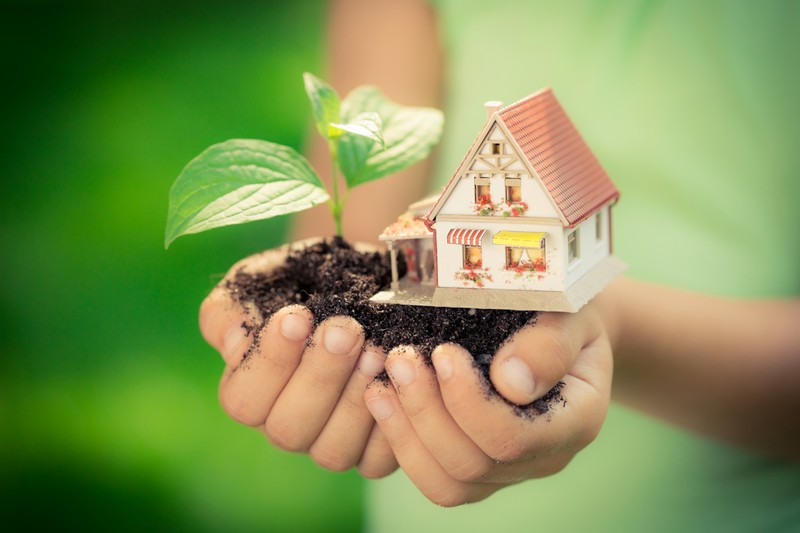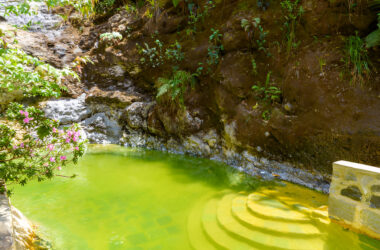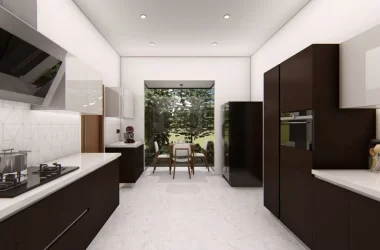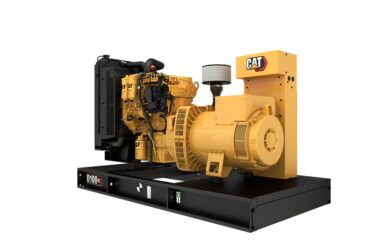1. Choose Eco-friendly Materials (Furniture, Flooring & Rugs)
To “go green” is not always to make changes to one’s personal lifestyle, such as installing solar panels, reducing one’s water usage, or switching to LED light bulbs, and this is something to keep in mind. A sustainable lifestyle can also be encouraged by other decorative elements, such as the material you choose for your furniture, floor coverings, and other architectural design. Let’s take a look at some real-world applications of these eco-friendly materials in design:
Reclaimed Wood – Barn Wood or Weathered Wood
The use of live trees in furniture production is not a green option. In contrast, reclaimed wood is made by giving old materials a new, eco-friendly purpose. Use reclaimed wood to update your home’s decor right away. Barn wood can be used for mantels, rocking chairs, coffee tables, and even flooring in a home with a rustic aesthetic.
Bamboo
A tropical grass with the appearance and functionality of wood but the superior strength and longevity of metal. Most people don’t think of bamboo as a tree but rather a type of grass. One of the quickest-growing plants and a fantastic renewable resource. Bamboo has a low ecological footprint because it requires few or no pesticides or fertilizers.
Recycled Metal
Metal has many uses and can be recycled or reused for both environmental and practical benefits. Its polished appearance can also give your home a touch of eco-friendly industrial style. Furniture manufacturers can save considerable amounts of both energy and water by recycling metal and plastic. In addition, the quality of recycled metal never decreases.
Bio-Glass
This eco-friendly, biodegradable alternative could be useful in the production of bathroom fixtures like sinks, counters, and flooring. This material, made from heated and compressed recycled glass, is used in the production of solid-surfacing slabs.
Cork
Despite the material’s apparent softness and compressibility, cork floors are fashioned to look and feel like hardwood. The sustainable nature of the cork industry lies in the fact that only the bark of the tree is removed. Cork flooring is also eco-friendly and long-lasting.
Recyled Plastic
The scope of recycled plastic’s application to interior design is enormous. Plastic bottles can be ground up and repurposed into carpeting for both indoor and outdoor use. Because of its density and weight, polyethylene can be used to create sturdy, long-lasting furniture. Because of the consistent hue throughout the fabric, it resists fading exceptionally well. Other plastics, like PET, are used to make bottles and weaving yarn.
Jute Fibres
A low-priced organic fiber that adds a touch of nature to any setting. This coarse material quickly regenerates and can be used again. They are an excellent option for anyone shopping for durable, stylish, and eco-friendly woven jute rugs for their home. Rugs woven from jute are inexpensive to make in addition to being an excellent thermal insulator.
2. Pick Environmentally Conscious Finishes
Did you know that giving raw material a nice sheen with paint or varnish also helps to preserve it? A volatile organic compound (VOC) found in many paints, according to Green America, can evaporate at room temperature and linger for weeks. VOCs are especially dangerous to people’s health because they pollute both the indoor and outdoor air. Environmental hazards such as biocides, fungicides, and pigments are present in many finishes. These eco-friendly coatings may help you reduce your environmental impact: Improved paint safety Finished with “low VOC” materials. Biodegradable paints Milky coloration The use of water-based paints, stains, and sealants Latex acrylic. If you need inspiration for your place, check out these hotels on Slingo.com.
3. Evaluate Sustainable Lighting Options
The mood of a room is set not just by the furniture, but by all of its components, including the lighting. An interior designer can make a strategic and aesthetically pleasing contribution to green design through the selection of light fixtures. Because of the positive effects they can have on the environment, more and more homeowners and city planners are making the switch to LED light bulbs. Environmental groups have found that LED bulbs last 25 times longer and consume 75% less energy than incandescent bulbs. Now that more efficient LED models are commercially available, incandescent bulbs can be swapped out for them. LED bulbs in pendant lights and table lamps are not only more energy efficient, but also more aesthetically pleasing.
Examine Your Light Fixtures for Heat Loss
Doors and windows may seem like the most obvious places for cold air to enter your home, but this is not always the case. It’s true that installing recessed ceiling lights can cause heat loss through the loft and out the window. Make it a habit to check the insulation around your home’s lighting fixtures on a regular basis. Eco-friendly bulbs not only help you save cash, but they also help you save energy.
Natural Light Source – Sun
Your curtain can be dimmed, used as a passive light source, or turned on full brightness to suit your needs. You can let the sun shine in by opening the blinds or choosing sheer, lightweight materials like cotton. Ten to twelve hours of daylight per day is the norm. These are perfect opportunities to cut back on energy use and soak up some rays.
4. Other Green Home Solutions
Almost every facet of contemporary house design offers opportunities to integrate eco-friendly features. In addition to their environmental benefits, sustainable and recycled materials, and energy-efficient lighting, present lucrative design opportunities. Ideas for environmentally responsible, cost-effective home construction, as well as less harmful alternatives to existing technologies.
Use Biofuel for Fireplaces
An operational fireplace is a welcome amenity during the cooler months, but maintaining it can be a pain. A poorly maintained fireplace allows warm air to escape and cold air to enter your home. Using a green fuel source in a fireplace is a modern eco-friendly way to make your home cozier.
Antiques – Recyle and Revamp
Adding some vintage pieces to your green home decor is a fantastic concept. Whether you’re an avid collector or you just inherited some old stuff, this is always the environmentally responsible option. Restoring vintage coffee tables, mirrors, dining room sets, and the like is like giving them a second chance at life. Adding antiques to your home is a great way to update its look and give it a classic, rustic country vibe. Find vintage pieces and give them a modern yet timeless makeover as an alternative to purchasing brand new furniture from the store.
5. Style Your Interiors The Eco Friendly Way
If you’re a creative who cares about the planet, you might want to give these aesthetics a try.
Green Country Look
Rustic design is synonymous with eco-friendly furniture. Adding to the aesthetic appeal of these spaces is rustic reclaimed wood flooring. These spaces are recreated using vintage and secondhand materials rather than brand new ones. This also helps in the fight for a cleaner, healthier planet. Keeping items in circulation for longer lessens the demand for cutting-edge, but potentially harmful, manufacturing techniques. Make your house a home by adding your personal touch with a wide range of rustic home accessories.
Minimal Interiors
By remembering that “less is more,” you can create sustainable, functional, and comfortable spaces without sacrificing environmental friendliness. If more people followed the minimalist philosophy of reducing their possessions, there would be less of an impact on the planet’s natural resources. Typical of Scandinavian design is a focus on minimalism and the understated elegance of organic materials. This approach to interior design, which makes minimal use of nonrenewable resources, reflects the minimalist ethos. You can avoid using processed synthetic materials by using natural materials such as organic cotton, linen, hemp, etc. for your bedsheets and other upholstery, and by using a small area rug made from jute fibers. During the colder months, biofuel fireplaces could be used as an alternative to electric space heaters.







